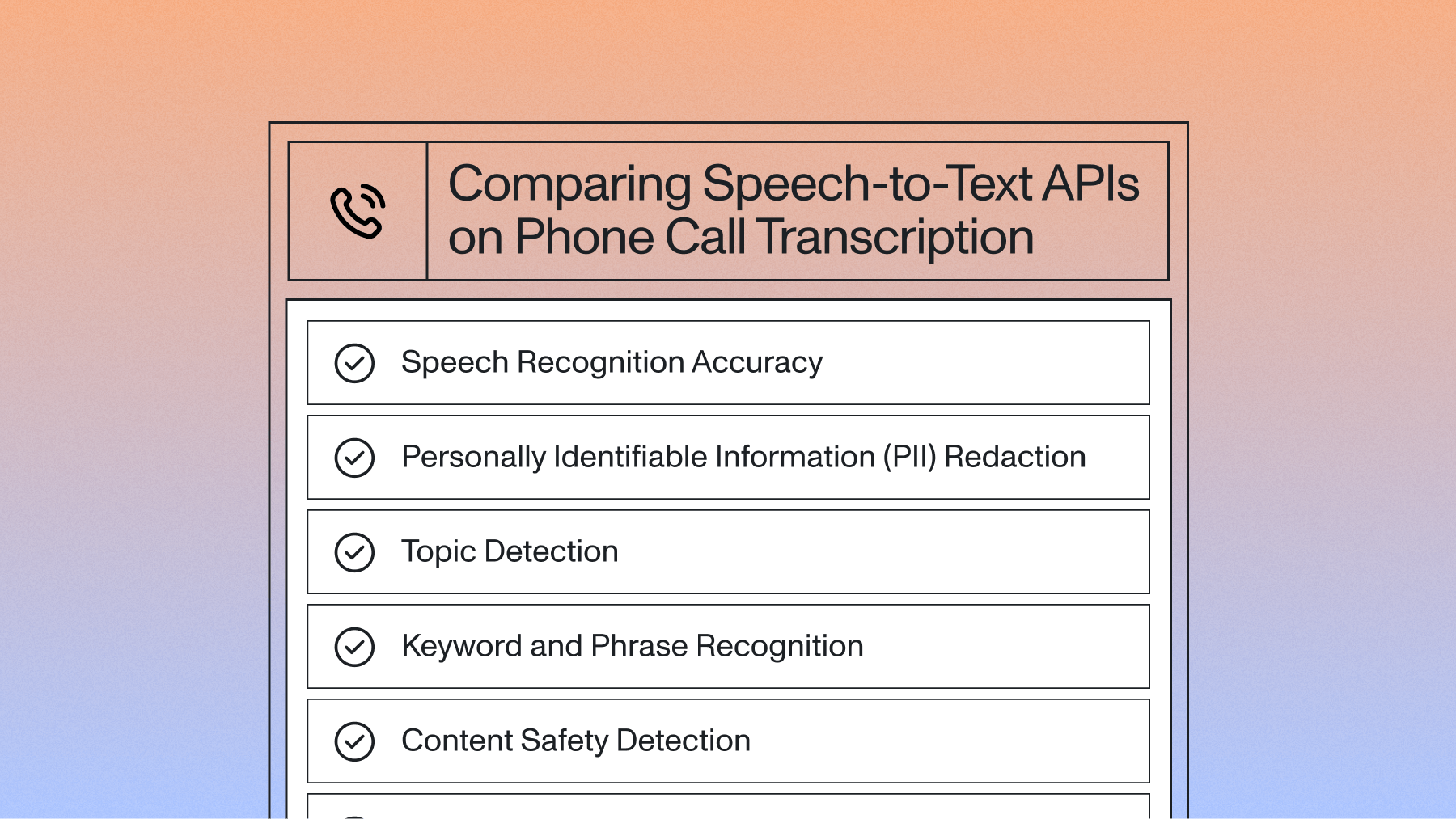Claude 2.1 Now Available with LeMUR + New Integrations
Claude 2.1 is now available through LeMUR and check out our new Haystack & Semantic Kernel Integration.



Hey 👋, this weekly update contains the latest info on our new product features, tutorials, and our community.
Anthropic's Claude 2.1 Now Available with LeMUR
Claude 2.1 is now available through LeMUR. This new model shares similarities with our Default model but stands out with reduced hallucinations, an expanded context window, and improved performance in citations.
To utilize Claude 2.1, simply set the final_model parameter to anthropic/claude-2-1 in your API requests to LeMUR. Below is an example of how to implement this using our Python SDK:
import assemblyai as aai transcriber = aai.Transcriber() transcript = transcriber.transcribe("https://example.org/customer.mp3") result = transcript.lemur.task( "Summarize the following transcript in three to five sentences.", final_model = aai.LemurModel.claude2_1, ) print(result.response)
Learn how to build with LeMUR in Java, TypeScript, and more with our docs.
Announcing the AssemblyAI Integration for Haystack
Haystack is an end-to-end LLM framework that enables you to build applications powered by LLMs, transformer models, vector search, and more. With the new AssemblyAI Haystack integration, you can now transcribe, summarize, or extract speakers from your audio files. Check out our guide to get started.
New AssemblyAI integration for Semantic Kernel .NET
Semantic Kernel is an SDK for multiple programming languages that integrates Large Language Models (LLMs) and other AI models. However, LLMs only operate on textual data and don’t understand what is said in audio files. With the new AssemblyAI integration for Semantic Kernel, you can use AssemblyAI's transcription models using the TranscribePlugin to transcribe your audio and video files.
Fresh From Our Blog
9 no-code and low-code ways to build AI-powered Speech-to-Text tools: Discover 9 no-code and low-code integrations and SDKs in JavaScript and Python for building with AI Speech-to-Text. Read more>>
How to Create SRT Files for Videos in Python: Learn how to create SRT subtitle files for videos using Python in this easy-to-follow guide. Read more>>
Key phrase detection in audio files using Python: Learn how to identify key phrases and important words using Python and AssemblyAI. Read more>>
Our Trending YouTube Tutorials
No-Code, No Problem: Create Speech-to-Text Apps with Minimal or No Coding: Learn how use simple no-code and low-code integrations and SDKs to get started building with AI Speech-to-Text.
The Emergent Abilities of LLMs - why LLMs are so useful: Learn what Emergent Abilities are, how they were discovered, why they are important, and some potential explanations for why they appear.
Convert Hindi Speech to Text (Python Tutorial): Convert spoken Hindi language into text using Python, using AssemblyAI’s Speech-to-Text library.
Lorem ipsum dolor sit amet, consectetur adipiscing elit, sed do eiusmod tempor incididunt ut labore et dolore magna aliqua. Ut enim ad minim veniam, quis nostrud exercitation ullamco laboris nisi ut aliquip ex ea commodo consequat. Duis aute irure dolor in reprehenderit in voluptate velit esse cillum dolore eu fugiat nulla pariatur.

